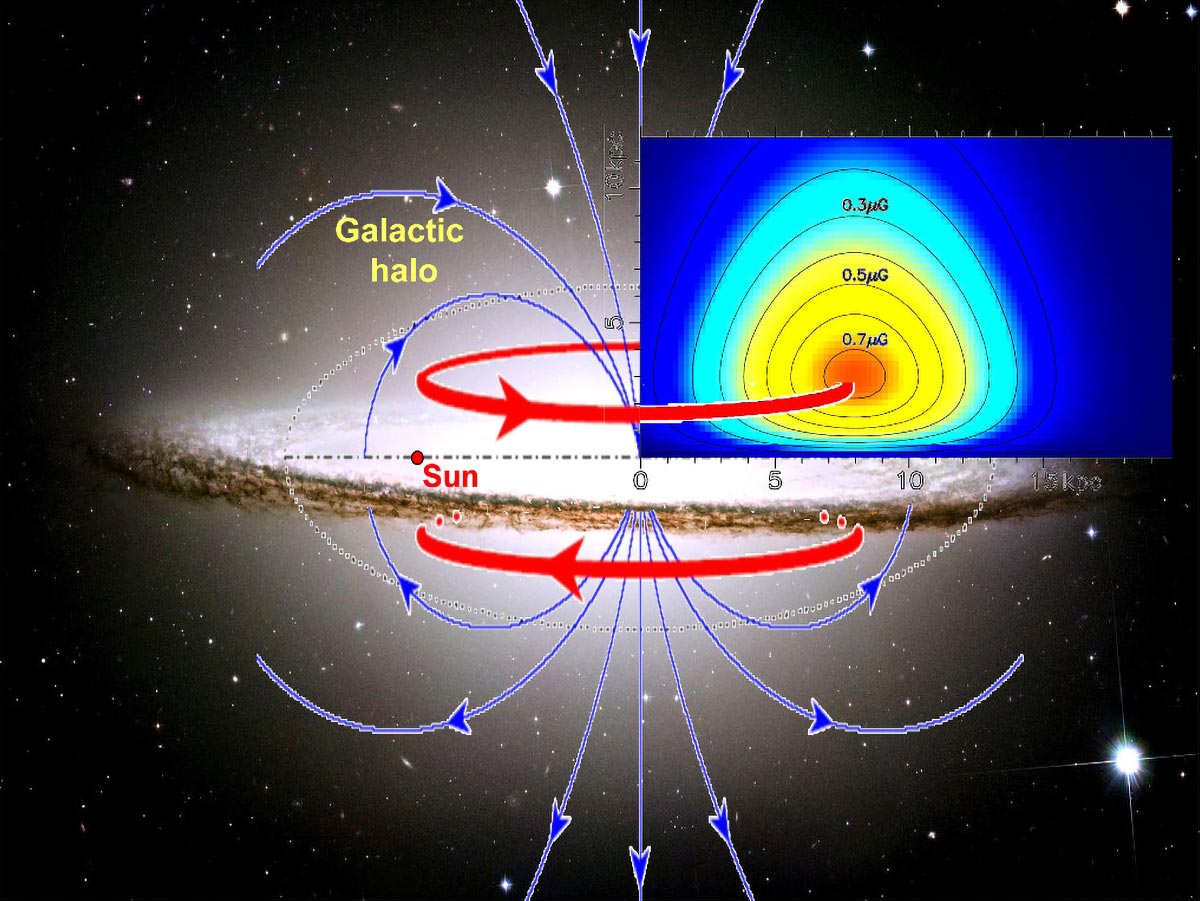Magnetic fields in the Milky Way’s halo have a toroidal structure, extending in a radius range from 6,000 light-years to 50,000 light-years from the center of the Milky Way. The sun is about 30,000 light years away. Credit: NAOC
Astrophysicists have discovered large magnetic toroids in the Milky Way‘s halo, which affects cosmic ray propagation and the physics of interstellar space. Their research, based on extensive Faraday rotation data, shows that these toroids extend across the entire Milky Way, confirming the presence of significant toroidal magnetic fields.
A long-standing unresolved question in the field of astronomy and astrophysics research is the origin and evolution of cosmic magnetic fields. It has been selected as one of the key research areas for many large world-class radio telescopes, including the Square Kilometer Array (SKA) currently under construction. Determining the large-scale magnetic field structures in the Milky Way has been a major challenge for many astronomers around the world for decades.
Discovery of magnetic toroidal nuclei
From a new study published in The Astrophysical Journal On May 10, Dr. Jun Xu and Prof. Jinlin Han of the National Astronomical Observatories of the Chinese Academy of Sciences (NAOC) revealed massive magnetic toroids in the Milky Way’s halo, which are fundamental to cosmic ray propagation and are critical to cosmic ray propagation . limitation of the physical processes in the interstellar medium and the origin of cosmic magnetic fields.
Prof. Han, a leading scientist in this field of research, determined the magnetic field structures along the spiral arms of the galactic disk through a long-term project measuring the polarization of pulsars and their Faraday effects. In 1997 he discovered a striking antisymmetry of the Faraday effects of cosmic radio sources in the sky with respect to the coordinates of our Milky Way Galaxy, showing that the magnetic fields in the Milky Way’s halo have a toroidal field structure. , with reverse magnetic field directions below and above the galactic plane.
Challenges in measuring magnetic fields
However, determining the size of these toroids or the strength of their magnetic fields has been a difficult task for astronomers for decades. They suspected that the antisymmetry of the sky distribution of Faraday effects from radio sources could only be caused by the interstellar medium near the Sun, because pulsars and some nearby radio emission objects, which are quite close to the Sun, allow see Faraday effects consistent with antisymmetry. The key is to show whether magnetic fields in the Milky Way’s vast halo had such a toroidal structure outside the vicinity of the Sun.
Innovative research methods
In this study, Prof. Han has innovatively proposed that the Faraday rotation from the interstellar medium near the Sun can be counted by measurements of a large number of pulsars, some of which were recently obtained by the Five-Hundred Aperture Spherical radio telescope (FAST) itself, and then the contribution could be subtracted from the measurements of cosmic background sources. All Faraday rotation measurement data from the past 30 years have been collected by Dr. Xu.
Through data analysis, scientists discovered that the antisymmetry of the Faraday rotation measurements, caused by the medium in the galactic halo, occurs throughout the sky, from the center to the anti-center of our Milky Way, implying that the toroidal magnetic fields with such strange symmetry are of enormous size and exist in a radius of 6,000 light-years to 50,000 light-years from the center of the Milky Way.
Conclusion and impact
This study has significantly advanced our understanding of the physics of the Milky Way and marks a milestone in cosmic magnetic field research.
Reference: “The Huge Magnetic Toroids in the Milky Way Halo” by J. Xu and JL Han, May 10, 2024, The Astrophysical Journal.
DOI: 10.3847/1538-4357/ad3a61
